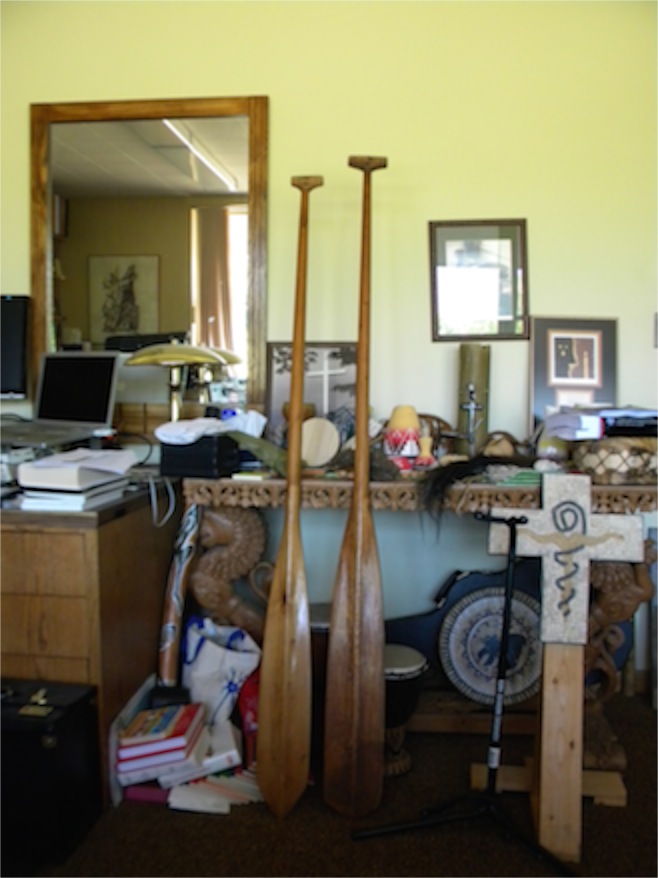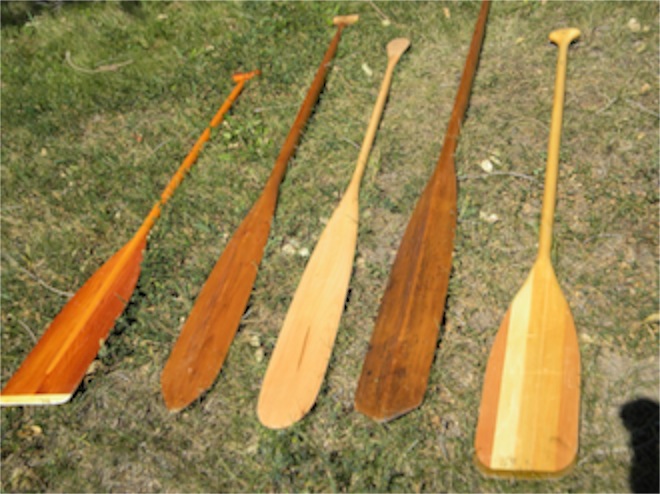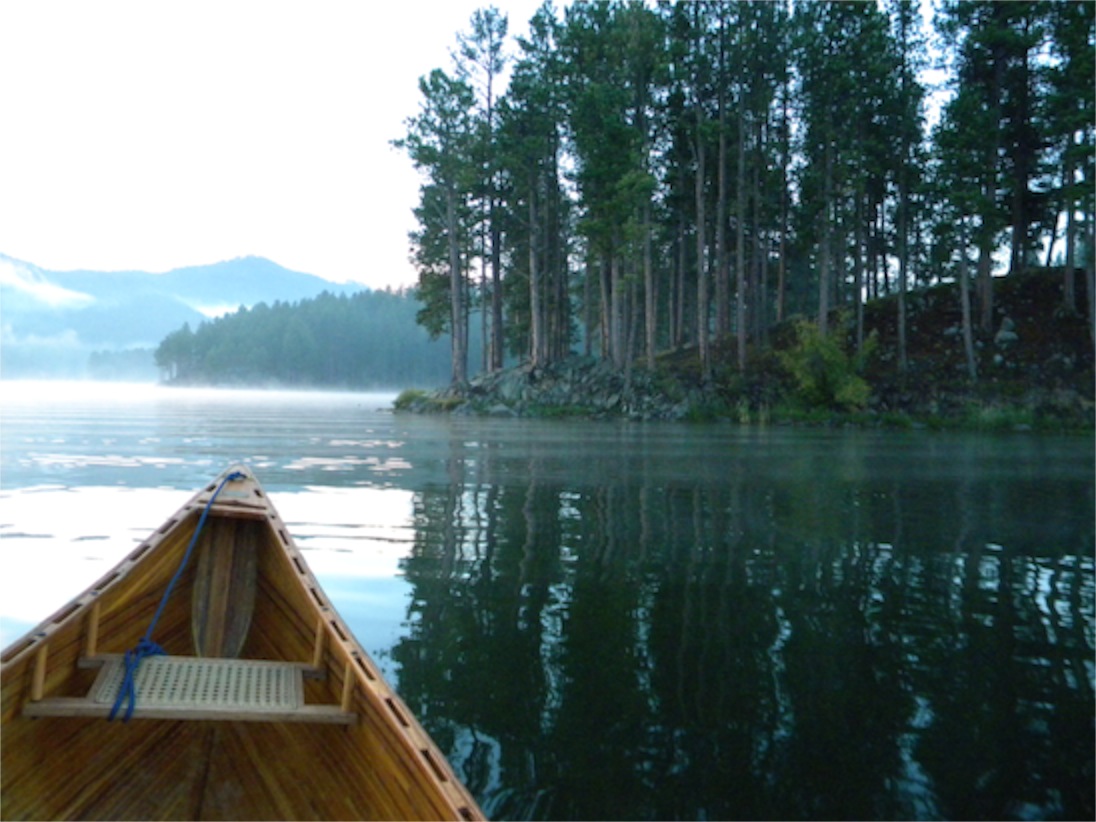Father Hubbard's Paddles
06/09/13 04:38

They are hand carved and the blades are pointed at the ends in a fashion reminiscent of the paddles of Pacific Northwest Tribes such as the Tlingit, Salish, Samish or Taimshian. The T-handles are secured by two nails each, and are carefully fitted to the handles. Other than the T-handles, the rest of the paddles are carved from a single piece of wood. The paddles are very well balanced with half of the weight in the blade and the other half in the handles.
And the paddles are very long compared to the paddles I use. In fact, I don’t think I have the height or arm length to use the paddles kneeling or sitting. From the first glance that I had of them, I assumed that they were designed to be used in a standing position. I don’t know of any Pacific tribes that stood in their canoes, but the larger canoes, with 10 – 12 paddlers, were steered by a single paddler seated in the stern with a larger paddle. The paddle was used primarily as a rudder and occasionally sweeps, pries or braces were employed to control the craft. The stern paddler used a larger and longer paddle than the others. These large canoes were paddled from a seating position, but the seats were higher than in a solo or tandem canoe due to the size of the boats, thus longer paddles were used.
I do know part of the story of the paddles. They are in my office because retired judge Michael O’Connor brought them by for me to see. He obtained them from a school he attended in Santa Clara, California. The school got them from the collection of The Reverend Bernard Hubbard, S.J. Father Hubbard was quite a character.
The Reverend Bernard R. Hubbard, S.J. lived from 1888 until 1962. For many years he served as the head of the Department of Geology at the University of Santa Clara, California. He was known as a geologist, volcanologist, ichthyologist, oceanographer and paleontologist. His area of expertise was the arctic, and he earned his nickname, “The Glacier Priest” by climbing the Austrian Alps. Over the course of his career, he led 31 scientific expeditions into Alaska and the Arctic.
Part of the legacy of Father Hubbard is a collection of thousands of photographs, movies and sound recordings. He was the author of three books. He published articles in the National Geographic and the Saturday Evening Post. Over the course of his life and the many scientific expeditions that he led, he acquired a great amount of memorabilia. At one time the two paddles that are temporarily residing in my office were part of his collection.
Given that his area of expertise was the Arctic and that he led expeditions to Alaska, I’m sure that the paddles have their origins in the tribes of the Pacific Northwest. Given the culture of those tribes, I am sure that the paddles were at one time honor gifts presented to Father Hubbard, not so much that he might paddle a canoe, but rather that he be gifted with valuable personal possessions. The canoes were tribally owned, but individuals possessed paddles and the paddles that were well balanced and easy to use were prized possessions and very valuable gifts.

One of the realities of life is that no archive is able to keep everything. It is likely that Father Hubbard also had gift paddles that were painted with the unique designs of the Alaskan tribes. Probably the archive decided that a couple of plain paddles weren’t representative enough of Father Hubbard’s travels to warrant keeping them in the archive. Fancy painted paddles, however, would have been used in ceremonies, but not actually used to travel by canoe. The paddles in my office may have been actually used for travel.
I imagine that there would be tales of great adventures that the paddles could report, were they able to tell the story of their journeys. But the roles of these particular paddles have been lost to the passage of time. Still, having them in my office affords me the luxury of dreaming about Alaska, the people who live in that huge land, and the ways that a legacy of paddling has been handed down from generation to generation throughout the centuries. A little bit of that story is on loan to me and temporarily residing in my office.
I have photographed the paddles and I have imagined what it might be like to actually use them. They would have great authority for sculling or bracing, but using such long paddles would be a stretch for me. My favorite paddle is a Racine model, carved by Shaw and Tenny in Orono, Maine. It is 58 ½ inches long. I don’t know exactly what to do with a paddle that is a foot longer. The giant blade would move a lot of water, but would require a lot of strength to pull.
So I won’t be paddling with Father Hubbard’s paddles. Still it is fun to look at them and imagine another minister who did some of his traveling in canoes.
